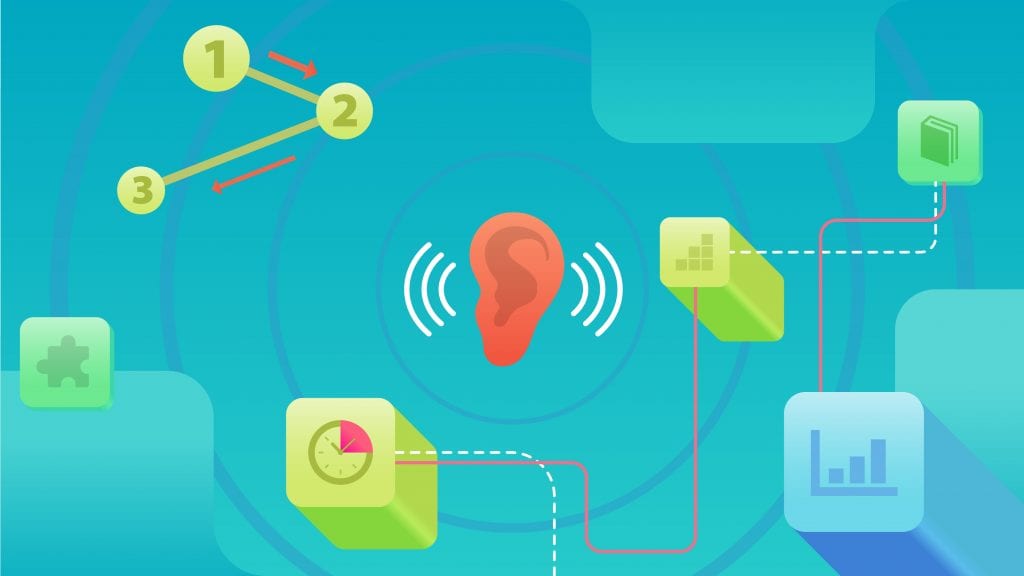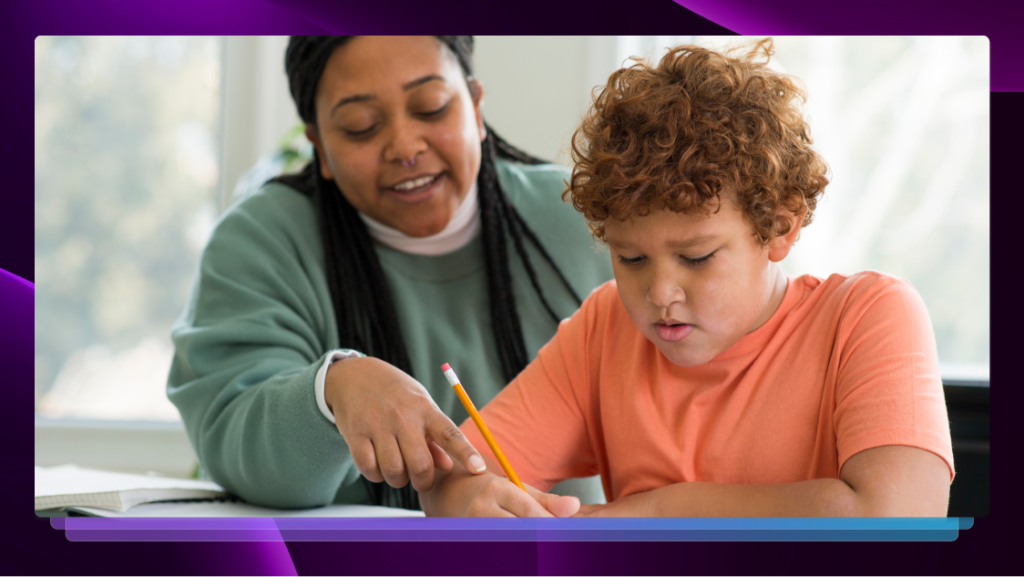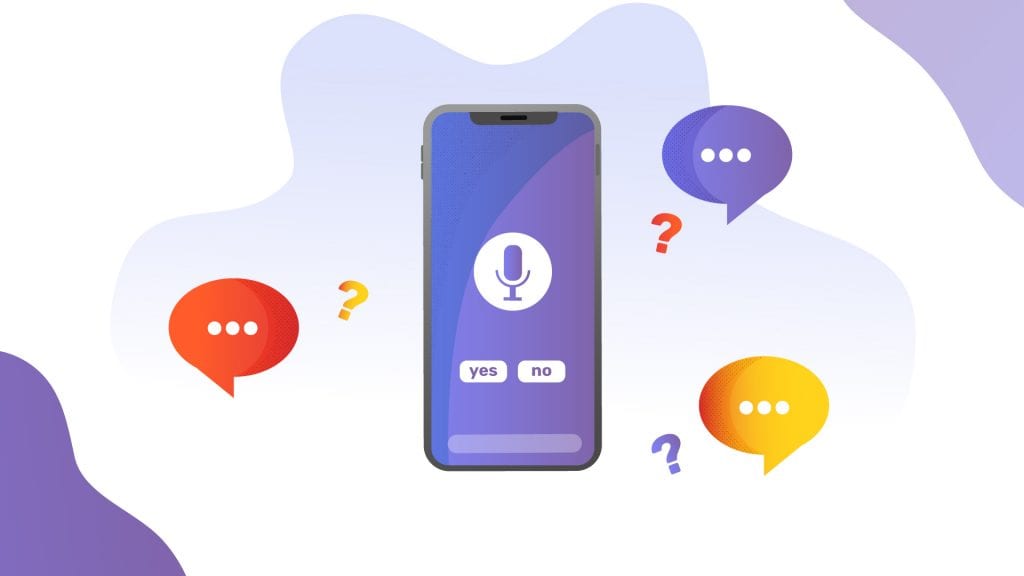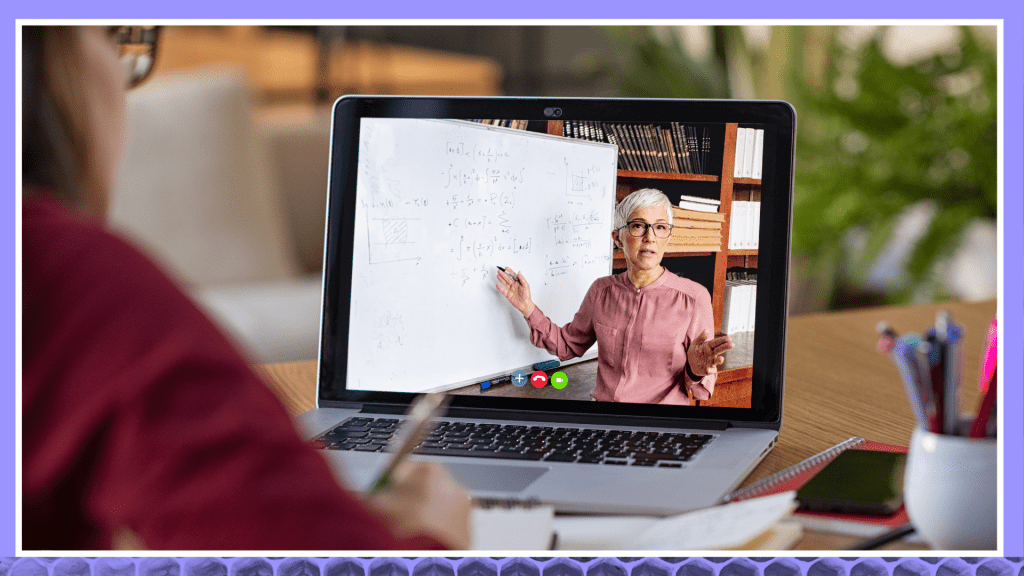Proven Remarkable Teaching Methods & Strategies for Students with Hearing Loss
Learning can be challenging for any student who is deaf or hard of hearing. Here are some teaching strategies for students with hearing loss.

This article is the second in a three-part series on teaching strategies for students with disabilities. Find the other entries below:
Part 1: Teaching Methods & Strategies for Students with Autism
Part 3: Teaching Methods & Strategies for Students with Dyslexia
Less than half of 18-year-old students experiencing hearing loss attained a fifth-grade reading level by the time they left high school.
The scope of the challenge of educating students with hearing differences is bigger than you might expect. The National Institute of Deafness or Other Communication Disorders (NICDC) estimates that two-to-three out of every 1,000 kids in the U.S. are born with some form of hearing loss in at least one ear, but often both. In most cases (90 percent), deaf children are born to hearing parents. This can present a significant learning curve for caregivers.
Accommodations like remote microphones and closed captions make a huge difference when it comes to teaching young people with hearing differences — so much so that the Americans with Disabilities Act (ADA) directs institutions to offer alternative formats for learning when reasonable.
These various accommodations can be extremely effective for students with hearing differences, so let’s dive into the many ways educators and caregivers can support these learners.
Key strategies teachers can use to empower students with hearing loss
With the onset of mass remote learning for many students, reaching children with learning differences has become more challenging in many ways. Teachers are juggling entirely new instructional formats for which they weren’t trained or prepared.
However, there are more tools available than ever before to support students with hearing loss. From new technology that allows for improved real-time comprehension to classic in-person supports that educators can leverage, there’s a great deal that can and should be done to level the playing field for all students.
Here are some key examples:
Classroom aides/ASL interpreters
There’s just no substitute for a dedicated assistant that can support students with hearing loss. Assistants can help with everyday activities like translating oral communication into sign language, and taking notes. Remember that students with hearing loss must focus intently on the speaker or interpreter during class, which can make note-taking and other comprehension tasks challenging in the moment.
Captions for video
Use multimedia strategies for lessons to make sure you can engage effectively with students who are deaf or hard of hearing. Make sure any videos used in a lesson plan have captions so students can follow along, or a transcript for students to read and go back to.
Recordings + live captions
For virtual learning, you can record virtual class meetings or lessons, and have them transcribed when the class is finished. You can also choose to enable a live captioning feature. Advances in artificial intelligence allow us to generate captions during a video meeting, so participants can read captions on the screen in real-time as people talk. This can help students feel more engaged and included in a virtual setting.
Transcripts
Ensure that all lessons, questions, and answers are transcribed for students who experience hearing loss. Transcripts of lessons can also be useful for students with other learning challenges.
Peer support
Ask hearing students to take turns as note-takers. Then distribute written notes to students who experience hearing loss.
Reduce background noise
Work to minimize background noise for students with hearing impairments since they can be more sensitive to and distracted by such noises.
Wear a clear mask
At a time when some schools are using hybrid learning models and classes are meeting face-to-face, facemasks are a necessity. When possible, educators should strive to wear clear masks that allow students with hearing loss to better understand oral communication along with visual cues and other body language signals. Many of these students rely on reading lips and facial expressions, much more so than hearing students. Don’t take that tool out of their toolbox.
Basic instructional changes
Make sure you have students’ attention before speaking and face students directly while talking. Speak slowly and slightly louder (but not shouting) and use your hands and body language. Lastly, provide extra written and visual resources to back up verbal instruction.
Use a sound-field FM system
With this system, a teacher wears a microphone and amplifies their voice using a speaker. All students in the classroom benefit from better audio presentations and teachers are able to conserve their voices using this tool.
Employ educational audiologists
An expert in classroom acoustics can really help teachers reach students with hearing impairments. An educational audiologist can advise educators on how to develop a classroom setting that empowers students with hearing loss.
Best practices for students with hearing impairments benefits the whole class
Whether your school is able to hire full- or part-time ASL interpreters or invest in speech-to-text services, there are a wide array of accommodations that should be taken into account when it comes to supporting deaf and hard of hearing students.
Hearing loss of any sort does not need not be a barrier for these students. The good news is that these accommodations only serve to enrich the educational experience for all students—hearing included. These tools give them a number of new angles to access educational content while also teaching them empathy and collaboration skills as they participate in supporting their peers with hearing loss.
There are plenty of teaching strategies that allow all students—not just those experiencing hearing loss—to meaningfully participate in educational settings. From alternative forms of assessment to live-captioning technology, the goal is to provide an equal footing so that students coming from different backgrounds can all succeed.
Every student deserves to feel included and get a fair shot at showing what they’ve learned. Reasonable accommodations for students with hearing loss make that more possible.















